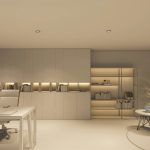When it comes to maintaining a healthy and stimulating environment for your Russian tortoise, getting the light conditions right is essential. These robust reptiles are native to the arid regions of Central Asia, where they experience a unique balance of light and heat. In captivity, it’s your responsibility to mimic this balance as closely as you can to ensure your pet thrives.
Whether you’re a beginner reptile enthusiast or an experienced tortoise keeper, this article will provide detailed insights to help you create the perfect light environment for your Russian tortoise. We’ll explore various aspects, including UVB light, temperature control, and the role of natural light, among others.
A lire en complément : What’s the Most Effective Way to Desensitize a Dog to Fireworks?
Understanding the Importance of UVB Light
When we talk about light for Russian tortoises, the conversation often begins with UVB light. UVB, or ultraviolet B, is a type of light that is essential for your tortoise’s health. It helps them produce vitamin D3, which in turn helps them metabolize calcium for strong bones and a healthy shell.
In the wild, tortoises bask under the sun to get this much-needed UVB light. In captivity, you need to supplement this using UVB-emitting lamps. Consider purchasing a high-quality UVB lamp that covers the entirety of the tortoise’s enclosure. The lamp should be on for around 10-12 hours a day, mimicking the natural daylight cycle.
A lire aussi : How to Create a Recovery Plan for an Overweight Beagle?
When setting up the UVB light system, remember to keep it within a safe distance from the tortoise. A distance of 10-12 inches from the basking area is generally considered optimal. Remember, too much UVB can be harmful, causing eye problems and burns.
Regulating Temperature in the Enclosure
Light and heat go hand-in-hand in a tortoise enclosure. Russian tortoises come from a climate that experiences extreme temperature variations. To recreate this, use a heat lamp to maintain a gradient of temperatures in the enclosure.
One end of the enclosure, the basking spot, should be between 90-95°F. The cooler end should be 70-75°F. This allows your tortoise to regulate its body temperature by moving between the warmer and cooler areas.
You should also regulate the night temperature, which should not drop below 60°F. Use a good quality thermometer to monitor the temperature in different spots of the enclosure accurately.
The Role of Natural Light
While UVB lamps and heat lamps play a significant role in a captive Russian tortoise’s life, nothing beats natural sunlight. Whenever possible, allow your tortoise access to natural sunlight, whether in an outdoor enclosure or by simply allowing them some time outside under supervision.
Natural sunlight provides not only the essential UVB light but also the warmth and brightness that can stimulate a tortoise’s natural behaviors. However, ensure there’s shade available for your pet to retreat from extreme heat or sunlight.
Choosing the Right Substrate
While substrate might not directly relate to light conditions, it affects how heat and light are absorbed and reflected within the enclosure. A substrate with the right texture and color can help regulate the enclosure’s temperature, especially under a heat lamp.
For a Russian tortoise, a combination of topsoil and sand typically works well. These not only provide the correct amount of heat absorption but also allow your tortoise to burrow, a natural behavior for this species.
Feeding and Lighting
The lighting conditions in your tortoise’s enclosure will also affect its feeding habits and diet. Russian tortoises are primarily herbivorous, thriving on a diet of leafy greens and vegetables. Proper lighting encourages normal feeding behavior and helps ensure your pet gets the most nutrition from its food.
Your tortoise’s feed should consist mainly of greens like kale, dandelion greens, and collard greens. Fruits should be given sparingly, as they are high in sugar. Remember to dust the food with a calcium supplement to provide additional nutrients.
In conclusion, creating optimal light conditions in your Russian tortoise’s habitat requires careful consideration of several interlinked factors, such as UVB light, temperature control, access to natural light, right substrate, and a balanced diet. By paying attention to these aspects, you’ll ensure your pet stays healthy and content in its home environment.
The Significance of a Humid Hide
A Russian tortoise’s health is significantly influenced by the humidity in its environment. In their native arid habitats, these tortoises often retreat into burrows, which provide a more humid microclimate. This behavior can be replicated in captivity using a humid hide.
A humid hide is a small, enclosed space filled with damp substrate where your tortoise can retreat to regulate its body temperature and moisture levels. It’s crucial for assisting in the process of shedding and maintaining a healthy respiratory system.
To create a humid hide, choose a container that is large enough for your tortoise to turn around comfortably inside. Fill it with damp substrate – a mix of sphagnum moss and coconut fiber works well. Make sure to monitor the hide regularly, refreshing the substrate as needed to maintain the proper moisture level.
While the overall environment for a Russian tortoise should be relatively dry, the humid hide provides a moisture-rich retreat. Remember to place the hide away from the direct reach of UVB light and heat lamps to avoid excessive drying.
Vendor’s Role in Providing Healthy Tortoises
There’s a significant difference between wild caught and captive bred Russian tortoises. Wild caught tortoises often suffer from stress, parasites, and potential health problems due to their abrupt change in environment. On the other hand, captive bred tortoises, especially those bred by reputable vendors like Tortoise Town, are more likely to adapt to life in captivity and have fewer health issues.
When purchasing a Russian tortoise, make sure to choose a trusted breeder or vendor who can provide a comprehensive care sheet. This guide will assist you in understanding the specific needs of your tortoise, including the optimal light conditions, diet, and habitat setup.
Look for breeders who prioritize the health and welfare of their tortoises. Many tortoises for sale are still babies, and a responsible breeder will ensure these baby tortoises have a robust start to life, including appropriate exposure to UVB lighting, regulated temperatures, and a healthy diet.
Conclusion
Caring for a Russian tortoise can be a rewarding experience, especially when equipped with the necessary knowledge to create an environment that closely mimics its natural habitat. Optimal light conditions, involving a balance of UVB light, heat regulation, and access to natural sunlight, are crucial for the health and happiness of your pet.
Additionally, providing a moist hideaway spot and choosing a reliable vendor for your tortoise purchase significantly contribute to the overall well-being of these captivating creatures. With thoughtful and careful planning, you can ensure your Russian tortoise thrives and lives a full, healthy life under your care.











